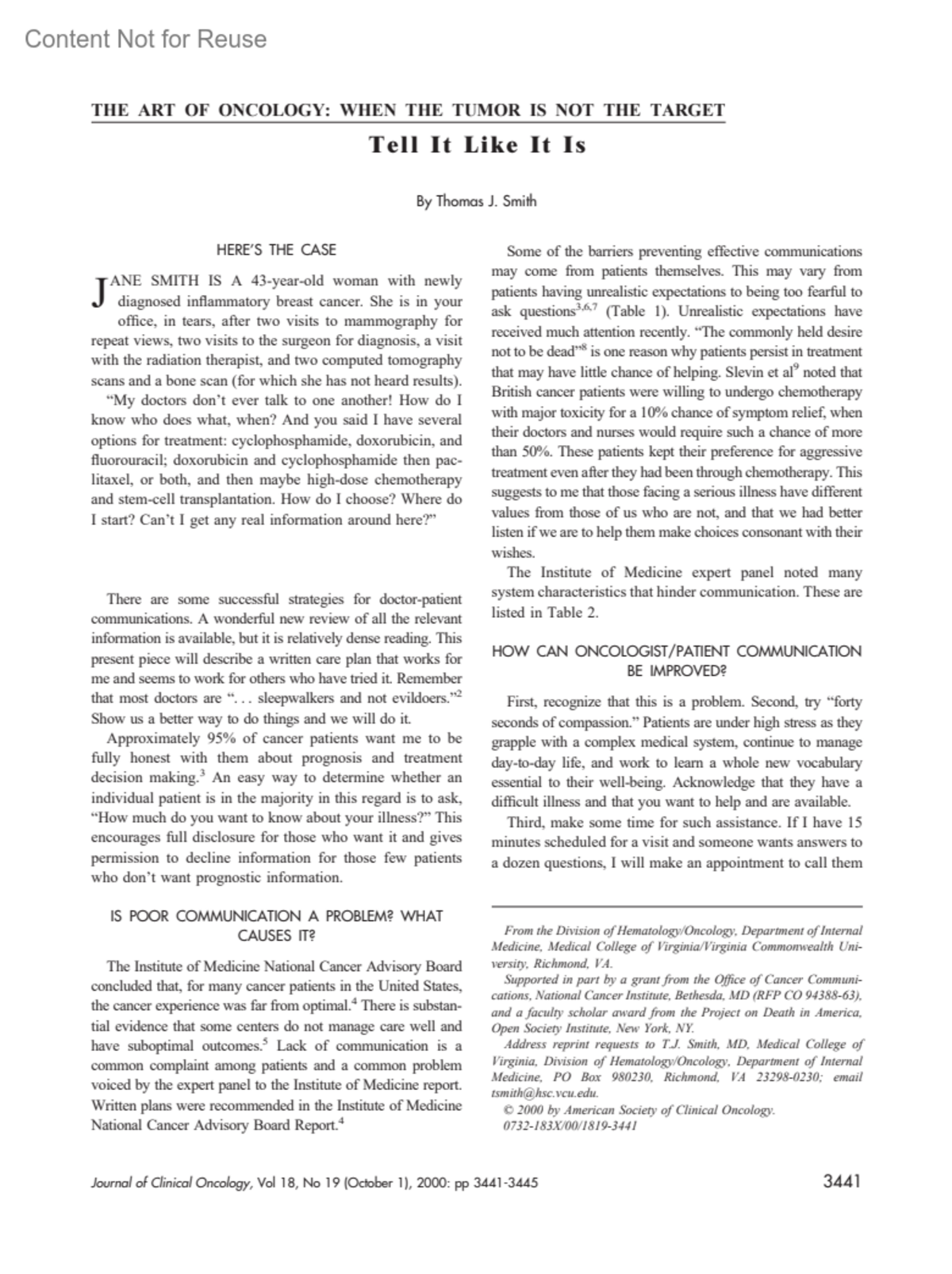Tell It Like It Is
- Smith, Thomas J.
From the Division of Hematology/Oncology, Department of Internal Medicine, Medical College of Virginia/Virginia Commonwealth University, Richmond, VA.
Address reprint requests to T.J. Smith, MD, Medical College of Virginia, Division of Hematology/Oncology, Department of Internal Medicine, PO Box 980230, Richmond, VA 23298-0230; email [email protected].
Supported in part by a grant from the Office of Cancer Communications, National Cancer Institute, Bethesda, MD (RFP CO 94388-63), and a faculty scholar award from the Project on Death in America, Open Society Institute, New York, NY.
EDITOR’S NOTE When we honestly communicate the potential pros/cons of cytotoxic therapy for patients with incurable cancer, we allow patients the ability to make informed decisions. Some choose to proceed with cytotoxic therapy; some don’t.
When we hold back on the truth, either because it is too hard for us to do or because we don’t want to abolish hope, we diminish the chance for an appropriately informed decision to be made. I believe that this causes us to treat too many patients for too long, for too little benefit, and without them knowing about it.
Dr Tom Smith expertly displays his methodology for honestly communicating treatment options with patients. His method puts all the cards on the table, allowing patients to make informed decisions about their care plans. Putting things down in writing allows physicians to be realistic in their goals/expectations. Is this the only way for oncologists to honestly communicate such information with their patients? No, but it certainly is worth thinking about. Let me use this background to lay out another style of providing treatment options for patients with advanced incurable metastatic cancer.
In addition to admitting that the potential cytotoxic therapy under consideration is not curative and providing a response rate (things I believe most oncologists do), I also share the following:
Mean response duration or mean time to disease progression.
Whether there is any good evidence, or even suggestive intuition, that the proposed therapy will, on average, prolong survival, compared with best supportive care, and by how much (1 month, 2 months, 6 months, and so on). I know that some of my oncology colleagues will claim that there are no good data in many of these situations, to which I reply, make your best educated guesstimate (ask expert colleagues to help with this) and so inform the patient.
That it is acceptable in many situations for a patient to decide not to receive additional cytotoxic therapy (eg, response rate of 10% to 15% for weeks to a few months on average in those few who respond and no suggestive evidence that patients receiving such cytotoxic therapy will, on average, live longer or better than those who don’t receive further cytotoxic therapy). It can be important for patients to hear that a decision to forego additional cytotoxic therapy in this situation is not akin to giving up. This allows patients to stop minimally effective and toxic therapy without experiencing inappropriate guilt.
Readers are invited to respond to the above communication suggestions and provide their clinical pearls regarding how best to communicate information about the pros/cons of noncurative cytotoxic therapy.

